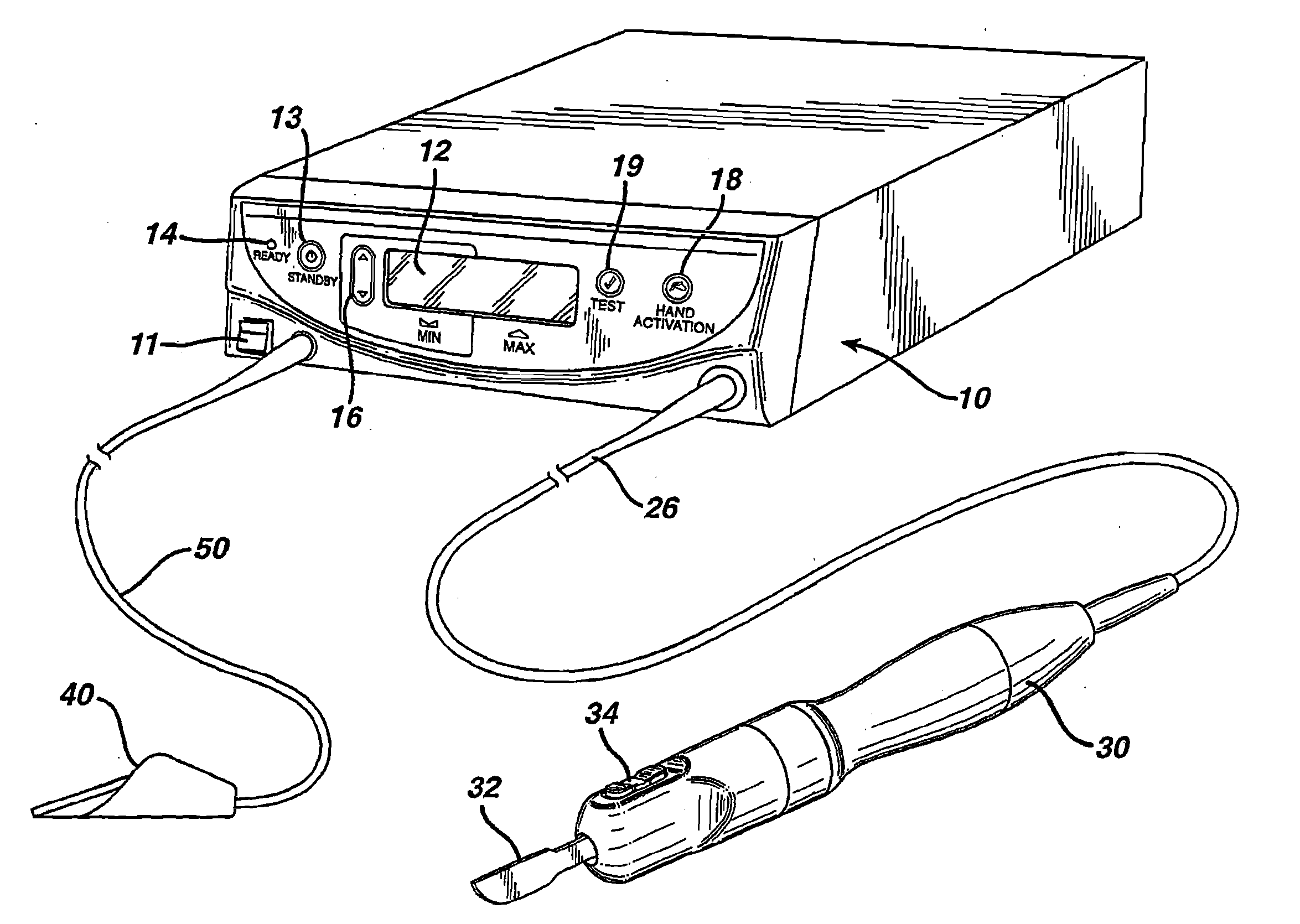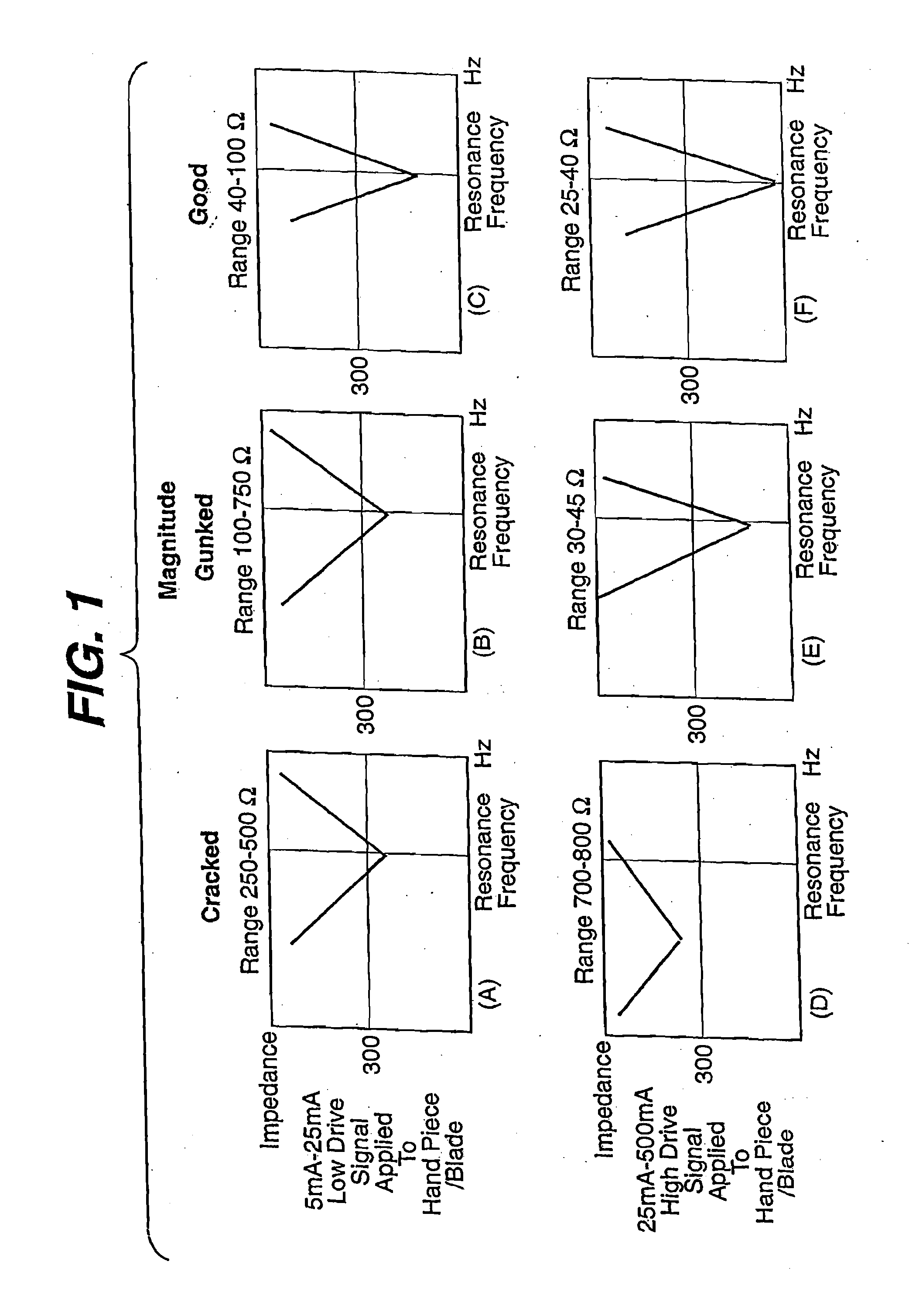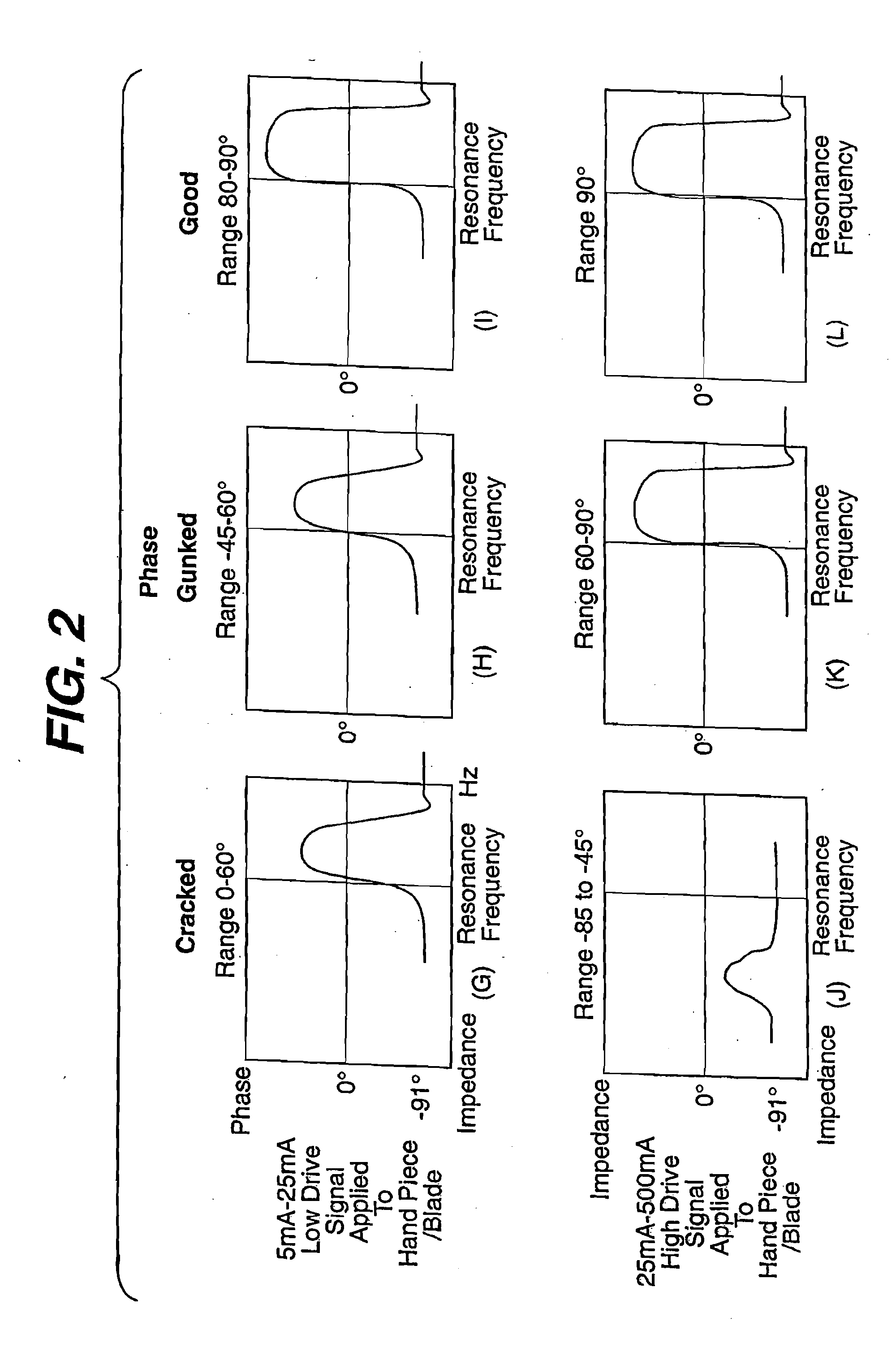Method for differentiating between burdened and cracked ultrasonically tuned blades
a technology of ultrasonically tuned blades and burdened blades, which is applied in the direction of mechanical vibration separation, furnaces, instruments, etc., can solve the problems of dampening blade vibration, changing impedance patterns, and changing measurement patterns, and achieve poor tissue cauterization and tissue coagulation
- Summary
- Abstract
- Description
- Claims
- Application Information
AI Technical Summary
Benefits of technology
Problems solved by technology
Method used
Image
Examples
Embodiment Construction
[0041] Impedance measurements of mechanical or acoustic systems obtained at high excitation levels provides much more information than impedance measurements obtained at low excitation levels. Moreover, comparisons of impedance measurements between low and high energy excitation levels provide even more detailed information about the condition of the hand piece / blade. The condition of the hand piece / blade falls into three main categories.
[0042] Firstly, gunked blades and new clean blades belong to the same category because silicon anti-node supporters and other mechanical inefficiencies, such as mechanical resistance in the longitudinal direction of the blade, have the same dampening effect as gunk upon the hand piece / blade. In particular, clean / gunked systems become much better resonators as the excitation amplitude is increased, that is they become higher Q systems (the minimum impedance gets markedly lower and the maximum phases get markedly higher; see FIG. 1 and compare the im...
PUM
| Property | Measurement | Unit |
|---|---|---|
| frequency | aaaaa | aaaaa |
| time | aaaaa | aaaaa |
| resonance frequency | aaaaa | aaaaa |
Abstract
Description
Claims
Application Information
 Login to View More
Login to View More - R&D
- Intellectual Property
- Life Sciences
- Materials
- Tech Scout
- Unparalleled Data Quality
- Higher Quality Content
- 60% Fewer Hallucinations
Browse by: Latest US Patents, China's latest patents, Technical Efficacy Thesaurus, Application Domain, Technology Topic, Popular Technical Reports.
© 2025 PatSnap. All rights reserved.Legal|Privacy policy|Modern Slavery Act Transparency Statement|Sitemap|About US| Contact US: help@patsnap.com



